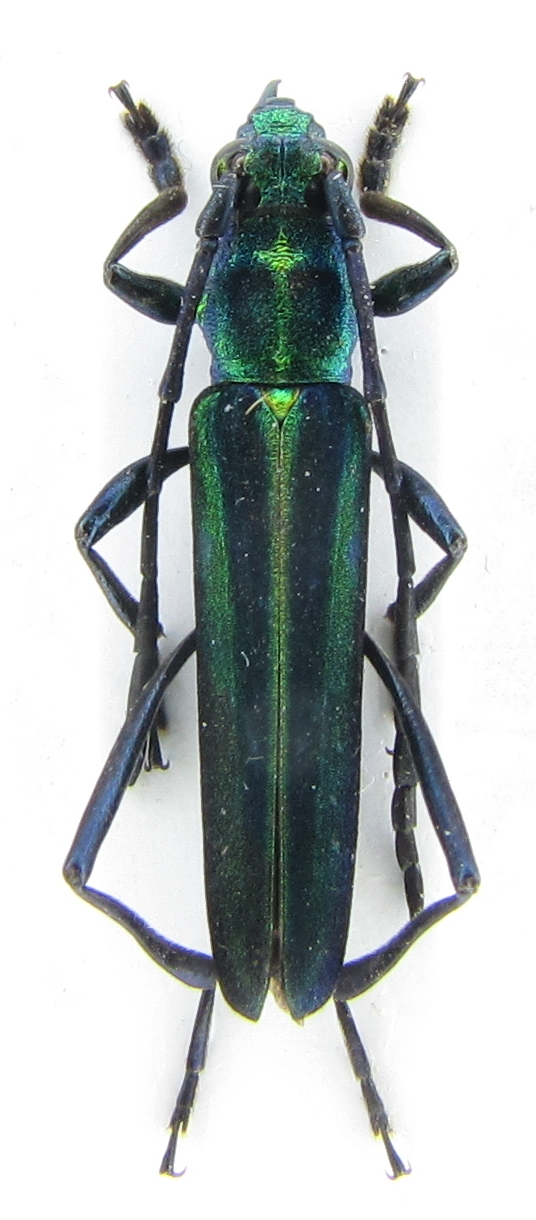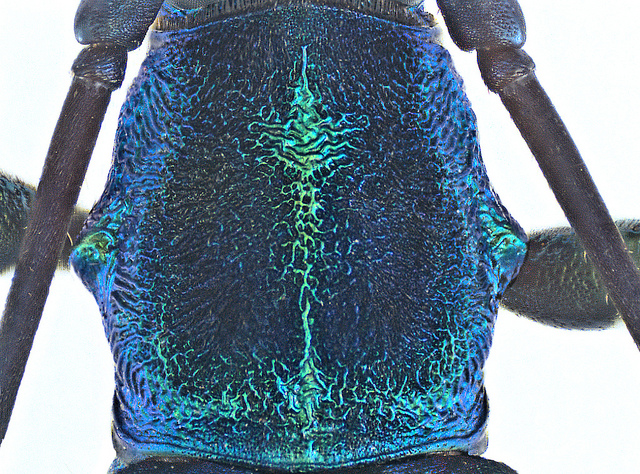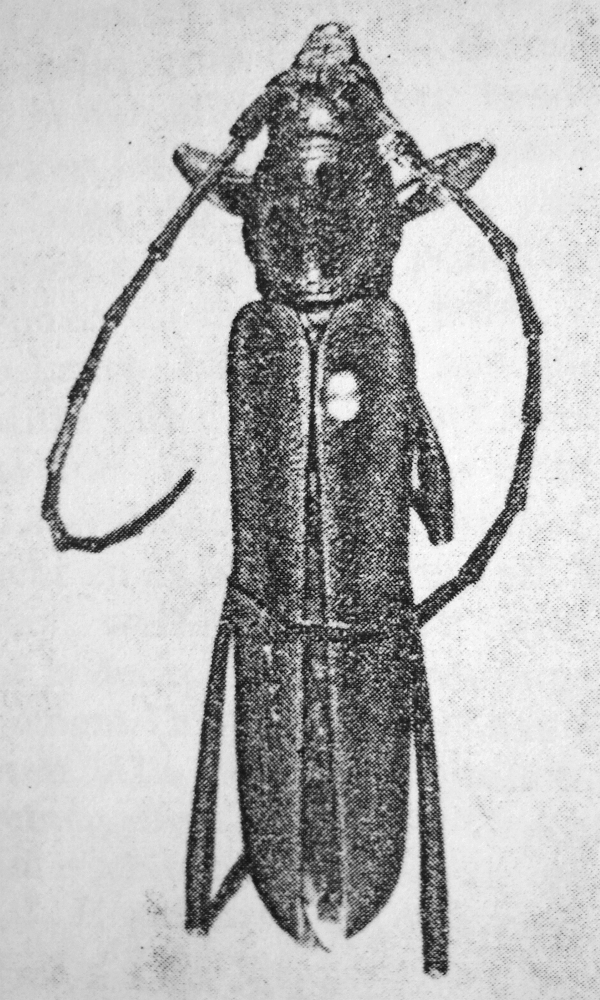| T O P I C R E V I E W |
| Vitali |
Posted - 04/06/2011 : 13:02:09

Another species from the same package.
Characterized by a slender body with parallel sides, dark pronotal spot divided longitudinally in two and black strips on elytra.
"Cameron Highlands", Malaysia. 17 mm. |
| 14 L A T E S T R E P L I E S (Newest First) |
| Beckey |
Posted - 21/12/2013 : 23:12:00
Thank you Andre, I should get the paper at once! |
| Andre |
Posted - 21/12/2013 : 14:43:14
Stenochroma copei Vives et. al., 2009 is after Bentanachs Polyzonus Revision 2012 a Polyzonus! |
| Beckey |
Posted - 21/12/2013 : 12:25:41
I am confused now.
According to "CERAMBYCINAE DE BORNEO - T", its name is Stenochroma copei.
Which name should we use? |
| Andre |
Posted - 19/12/2013 : 16:51:01
Hallo Vitali. The structure from the Pronotum is often a good feature by the callichromatini and normally few variable. |
| Vitali |
Posted - 17/12/2013 : 23:46:07
Dear Andre. I checked my specimen. It seems to be Polyzonus indeed, and I hardly can see any difference from your photo and other, which can be found in Flickr. The correspondence is surprisingly good, up to the wrinkles on pronotum sides, but there are no wrinkled lines on the disk... only punctures. I wonder if this is important. So, Polyzonus copei? |
| Andre |
Posted - 11/12/2013 : 22:21:18

374.38 KB
Might be Polyzonus copei Vives et al., 2009.
Here the Pronotum from a PT. (Udo Schmidt) |
| Vitali |
Posted - 10/06/2011 : 23:07:39
Sorry, I was wrong with the length of 4th antennomere. It ends on the background of mid femora and I missed it regarding 4th and 5th antennomeres as one. What a shame! Anyway, the question seems to be answered now. Thank you a lot. |
| Francesco |
Posted - 10/06/2011 : 22:40:36
Hence, it might be its female; nonetheless, the antennae seem to have the same total length... |
| Vitali |
Posted - 10/06/2011 : 22:23:12
I looked up. It has 5 sternites, so a female. |
| Francesco |
Posted - 10/06/2011 : 12:37:43
Is your specimen a female?
It should have 5 abdominal segments. |
| Vitali |
Posted - 10/06/2011 : 10:27:39
Thus, it should not be the same species if only the question is not in sex dimorphism. Antennae are completely different.
In your scan: the 4th antennomere is shorter than 3rd, while next antennomeres are relatively long.
In my beetle: 4th and 3rd are equal, 4th might be even slightly longer than 3rd, while the 5th and further are very short and broad. In fact antennae are slightly broadening towards the tip. |
| Francesco |
Posted - 10/06/2011 : 08:31:59

Voilà.
Source: Podanı C., 1974 - Studien über Callichromini der paläarktischen und orientalischen Region (III.) - Annotationes Zoologicae et Botanicae 91: p. 13 (f. 5).
Body length of the holotype (male): 22 mm |
| Francesco |
Posted - 09/06/2011 : 22:06:51
Unfortunately, reading Hüdepohl (1998) the only added species to Podanı's key is C. monticola Hüdepohl, 1989 (description here), a species from the Philippines 30 mm long.
Tomorrow, I add the original picture if C. bryanti. |
| Francesco |
Posted - 05/06/2011 : 08:28:26
It is very similar to Chelidonium bryanti Podanı, 1974, described from Sarawak but maybe it belongs to another related species. |


